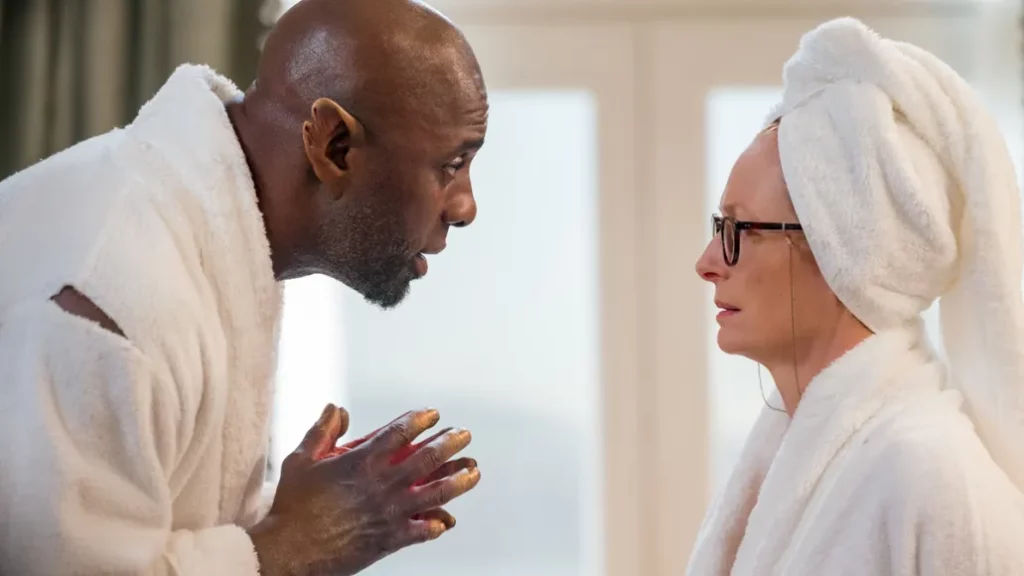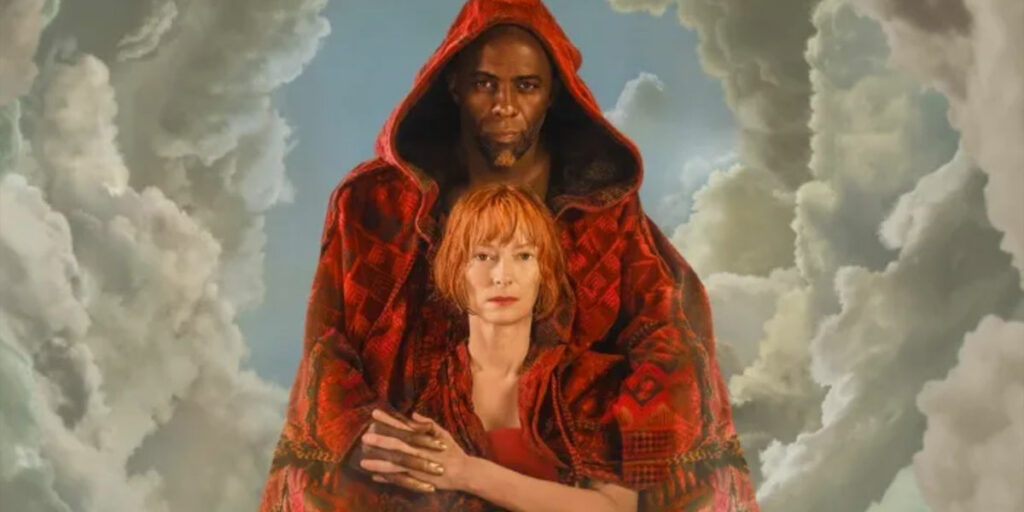Three Thousand Years Of Longing offers a visually appealing mosaic of fantasy tales and quickly gets comfortable in its absurdity.
In Three Thousand Years Of Longing, George Miller creates a thrilling mosaic of stories where reality and fantasy become one. Alithea (Tilda Swinton) is a lonely British scholar who lives for the stories she collects, which causes her to be troubled by hallucinations of her vivid imagination. After stumbling upon an ancient bottle in Istanbul, she unleashes a djinn (Idris Elba) who grants her three wishes, igniting in both of them a spark of love for stories long lost. From there on, the film quickly takes an unexpected turn as the djinn tells Alithea the stories of how he ended up in her hands, before carrying on with the story of the two.
One could easily get tired of the constant voice-over and the lack of dialogue in a film packed with flashbacks and suggestive interpretations. The idea behind it is quite interesting, though: every story is biased, and no story can represent an exact replica of the facts and idealizations it aims to display, which explains the movie’s high narrator appeal; the djinn is far from being a reliable narrator, but there’s something magical about his storytelling that kept both Alithea and me entranced in every word that’s been said. Through his stories of love and betrayal, there’s a certain atmosphere of suspicion that somehow lingers until the very final scene of the movie, where viewers are questioned about what can be considered love in a world of fabricated feelings. Even though the djinn’s stories take place thousands of years ago, they are actually happening right there, in the present; they preserve the djinn’s perceptual storytelling as the only possible truth, leaving viewers with no choice but to believe it all happened as he says. In the same way, we are forced to wonder about how truthful is the love that leads the encounter between Alithea and the djinn into an unusual romance.
Still on the topic of the stories, it’s a bold choice to use historical events as the base of the tales that make up the figure of the djinn, distorting facts in favor of crossing the boundaries of imagination. It shows confidence and faith in a source material that constantly deviates from the blockbuster formula; a straightforward deviation of narrative structure and ideas put together, even though we’re talking about a $60 million dollar movie – a budget that can turn into actual gold in the hands of a talented director like George Miller as he does something few directors could’ve done with an even greater amount.
Three Thousand Years Of Longing is a great example of how CGI and visual effects overall are never really about offering realistic results but are in fact supposed to offer something that visually adds up to the narrative. The film’s visual effects, while far from being slightly convincing, are effective because they blend into the exuberant, dream-like feel of the narrative, which reminded me of Lynch’s horrifying use of CGI in Twin Peaks: The Return; they are so weirdly conceived that evoke an immediate sense of strangeness, the precise feeling Lynch expects to extract from his audience. In Miller’s case, he aims at overwhelming our eyes with bursts of vibrant colors and magic, constantly reminding us how the film represents something far from reality. The more he exaggerates, the more we get entranced in his world of fantasy.

Three Thousand Years Of Longing meanders at a fast pace and isn’t subtle in all its weirdness; the flashbacks unravel in excessive tones of yellow and breathtaking landscapes where every palace looks like the center of the world. The exuberant costumes and vibrant set design challenge viewers to look behind the veil of reality, offering a vital tonal shift that precisely drives viewers to where they’re supposed to be. We are tired of hearing how the journey is all that matters in the end, but as Miller ensures past and present unravel simultaneously, it ends up being funny to see how a movie so interested in the magic of stories disregards every conventional structure that technically constitutes a good story. There’s no beginning, middle, or end, and the narrative is packed with strange characters that come and go, with Elithea and the djinn ultimately being the sole force that ties the film together.
In the end, I was so entranced by the movie’s messy narrative structure that the tidy third act caught me off guard; more than once I was hoping the movie would end right there, but it continued for 15 more minutes or so, which caused the actual ending to not hit me as hard as I expected it would. Overall, I was left bewildered by the charming chemistry between Idris Elba and Tilda Swinton, as well as Miller’s original take on well-known mythologies; the figure of the djinn, for example, is gradually deconstructed from its mysticisms until he becomes as humanized as Elithea, which ends up being the main conflict of the film’s final act. But more importantly, Three Thousand Years Of Longing challenges us to contemplate our own mortality as a distant longing, and reflect on how much we give from ourselves in order to feel love. A love that remains locked up in an ancient bottle until it finds its way to our hands, unfolding whatever could possibly be our heart’s desire.
Three Thousand Years of Longing is now available to watch globally in theaters.

